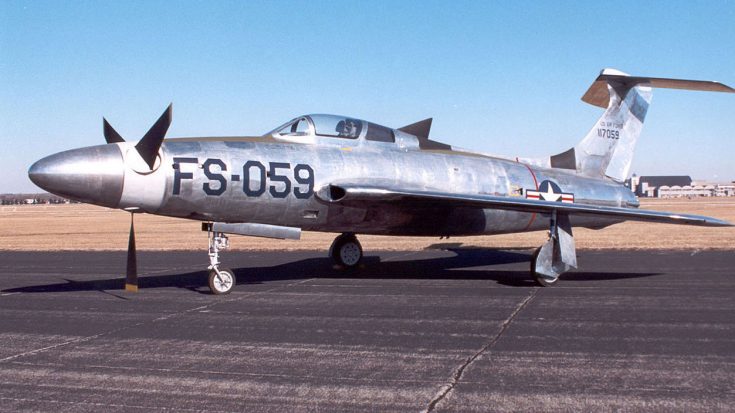
Only the first airframe FS-059 flew, taking to the air on 22 July 1955, and logged only 10 hours. Prototype 51-17059 underwent 10 hours of flight testing. After numerous complaints, the Air Force Flight Test Center directed Republic to tow the aircraft out on Rogers Dry Lake, far from the flight line, before running up its engine. The pervasive noise also severely disrupted operations in the Edwards AFB control tower by risking vibration damage to sensitive components and forcing air traffic personnel to communicate with the XF-84H's crew on the flight line by light signals. In one report, a Republic engineer suffered a seizure after close range exposure to the shock waves emanating from a powered-up XF-84H. Coupled with the already considerable noise from the sub-sonic aspect of the propeller and the dual jet turbines, the aircraft was notorious for inducing severe nausea and headaches among ground crews. Unlike standard propellers which turn at subsonic speeds, the outer 24–30 inches of the blades on the XF-84H's propeller traveled faster than the speed of sound even at idle thrust, producing a continuous visible sonic boom that radiated laterally from the propellers for hundreds of yards and was reportedly strong enough to knock a man down. The XF-84H was quite possibly the loudest aircraft ever built, earning the nickname "Thunderscreech" as well as the "Mighty Ear Banger" On the ground, they could reportedly be heard 25 miles (40 km) away. Test pilot Hank Baird took the craft up 11 times, with 10 of these flights ending in forced landings. One test pilot flew it once and refused to ever fly in it again. It was plagued with engine-related problems that affected other aircraft of the time with similar Allison T40 engines such as the Douglas XA2D Skyshark and the North American A2J Super Savage attack aircraft. The XF-84H was destabilized by the powerful torque from the propeller, as well as inherent problems with supersonic propeller blades.

The unit was often deployed in flight as a precaution. The XF-84H was the first aircraft to carry a retractable/extendable ram air turbine in the event of failure of the engine, it would automatically swing out into the airstream to provide hydraulic and electrical power. The tail was modified to a T-tail to avoid turbulent airflow flow over the horizontal stabilizer/elevator surfaces from propeller wash. Thrust was adjusted by changing the blade pitch.

The 12 ft diameter Aeroproducts propeller consisted of three steel, square-tipped blades turning at a constant 3,000 rpm, with the tips travelling at approximately Mach 1.18. An afterburner was installed though never used, which could increase power to 7,230 hp (5,391 kW). The engine was changed to an Allison XT-40-A-1, capable of 5,850 hp (4,362 kW).

The XF-84H was created by modifying a F-84F Thunderstreak aircraft. Navy requirement for a carrier fighter not requiring catapult assistance, although the USAF Wright Air Development Center was the key sponsor of the project. The initial inception for the program came from a U.S. Originally designated XF-106, the project and its resultant prototype aircraft were renamed XF-84H, suggesting it was a mere F-84 variant, rather than an entirely new type.


 0 kommentar(er)
0 kommentar(er)
